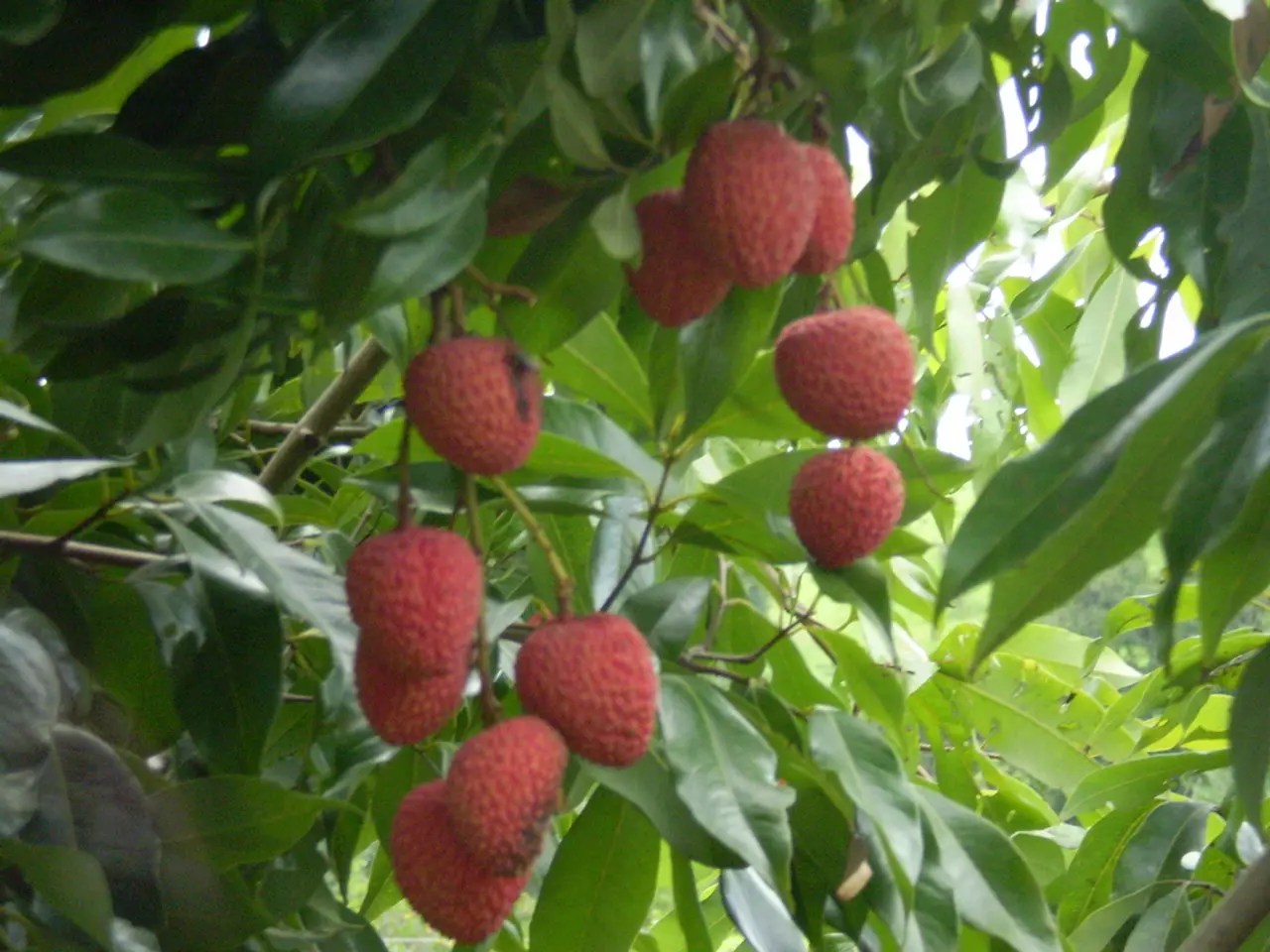Cultivating Strawberries in Your Backyard Garden
In the heart of the Midwest, Ohio offers a unique climate for home gardening, especially when it comes to strawberries. Here's a guide to help you choose the best strawberry cultivars for your Ohio garden, as well as some essential tips for planting and care.
First, let's discuss the planting process. Day-neutral strawberries are planted 8 to 12 inches apart in the row and 30 to 36 inches between rows. These plants thrive in Ohio's climate, and soil testing every two to three years is recommended for optimal yield and quality.
When it comes to choosing the right cultivars, Ohio State University recommends 'Honeoye' and 'Chandler' for their cold hardiness, reliability, and excellent fruit production. 'Honeoye' is a mid-season berry known for its flavorful berries with good shelf life, while 'Chandler' produces large, firm, glossy fruit that's perfect for fresh eating and preserves.
Other recommended cultivars include 'Tribute', an everbearing day-neutral variety that does well even in container culture and produces fruit over a long season. For best results in Ohio's climate, home gardeners should consider cultivars that are cold-hardy and mid-season bearing while paying attention to disease resistance, especially regarding new regional fungal threats being studied by Ohio State University.
Frost protection is crucial for strawberry flower buds, especially with early cultivars. Mulching can help protect the plants, with mulches being pulled from plants in early spring and reapplied when frost is predicted.
Strawberry plants can fruit more than one year but probably not for more than three harvest seasons. After the third year, the yield usually declines, and a new planting should be established for maximum production every year.
Strawberry plants produce up to one quart of fruit per plant in the first year when grown in a matted row. These plants are not only productive but also rich in antioxidants, which have anticancer properties. Strawberries are versatile as a dessert food and are excellent for jams, jellies, and pies.
Weed control can be maintained through mechanical cultivation, mulching, and certain herbicides. Nutrients and lime (if needed) should be applied prior to planting according to soil test results, and additional nitrogen can be applied at specific times during the growing season.
After harvest, strawberry plants should be renovated by controlling weeds, removing old leaves, narrowing the rows, thinning the plants, topdressing with soil, and fertilizing. Winter protection for strawberry plants is necessary and can be provided through mulching with straw that is free of weed seeds.
In summary, 'Honeoye', 'Chandler', and 'Tribute' are among the best choices for Ohio home gardens, with ongoing efforts to breed new resistant varieties through local university programs. With these recommendations and some careful attention to planting and care, you'll be enjoying delicious, home-grown strawberries in no time!
Horticulture in home-and-garden, specifically strawberry gardening in Ohio, requires paying attention to soil conditions. Soil testing every two to three years is recommended for optimal yield and quality during strawberry cultivation.
When selecting the best strawberry cultivars for an Ohio garden, consider the cold-hardiness and reliability of cultivars such as 'Honeoye' and 'Chandler', both known for their excellent fruit production.
Gardening practices like weed control, nutrient application, and winter protection are essential for maximizing strawberry production in Ohio home gardens, along with following essential tips for planting and care.



